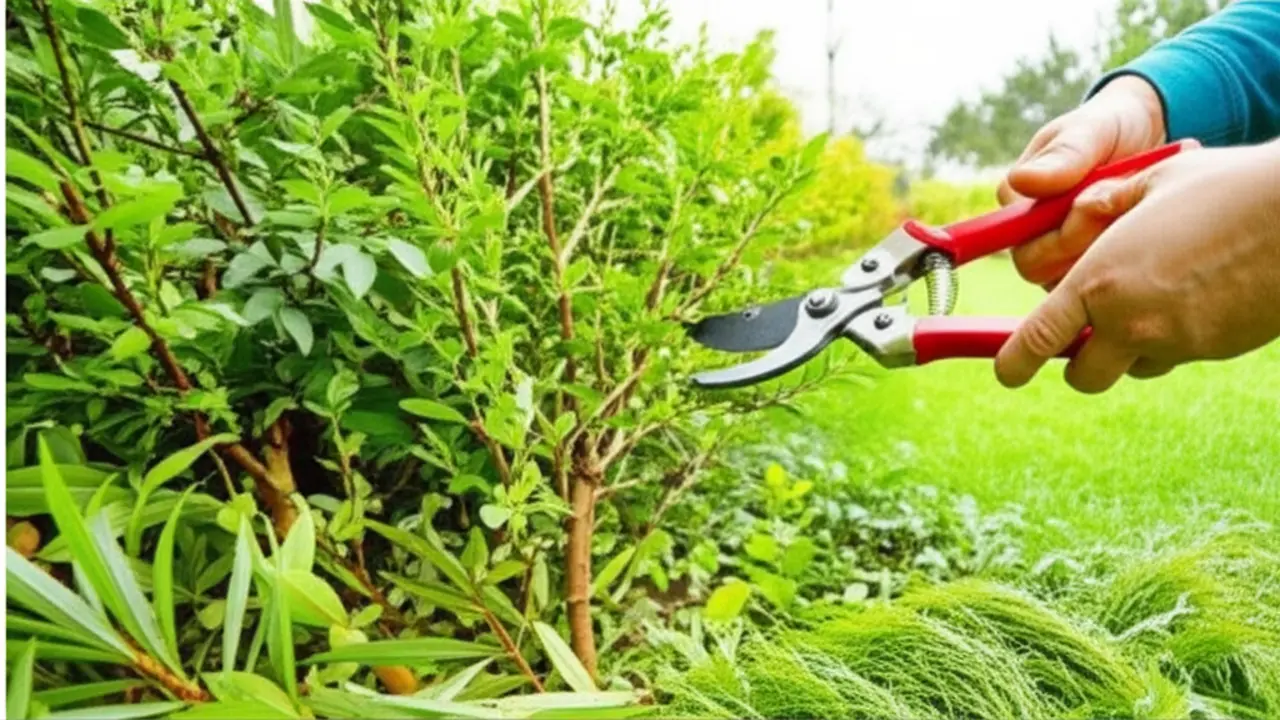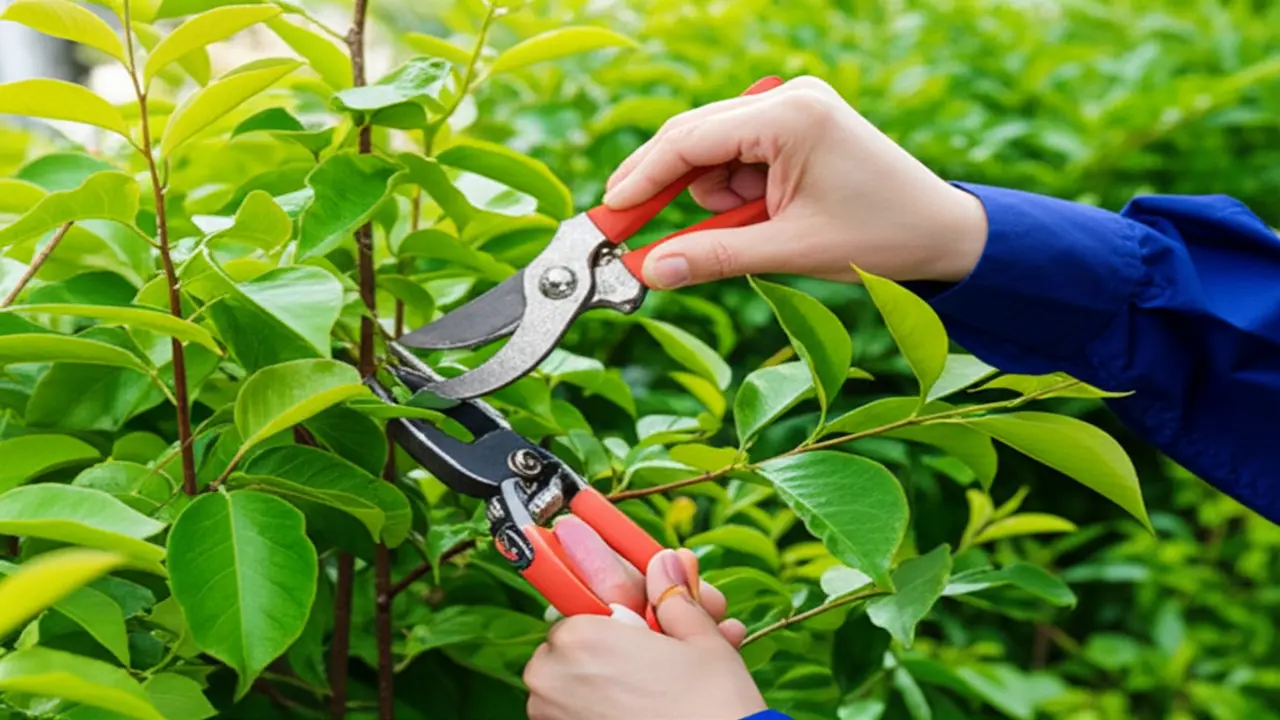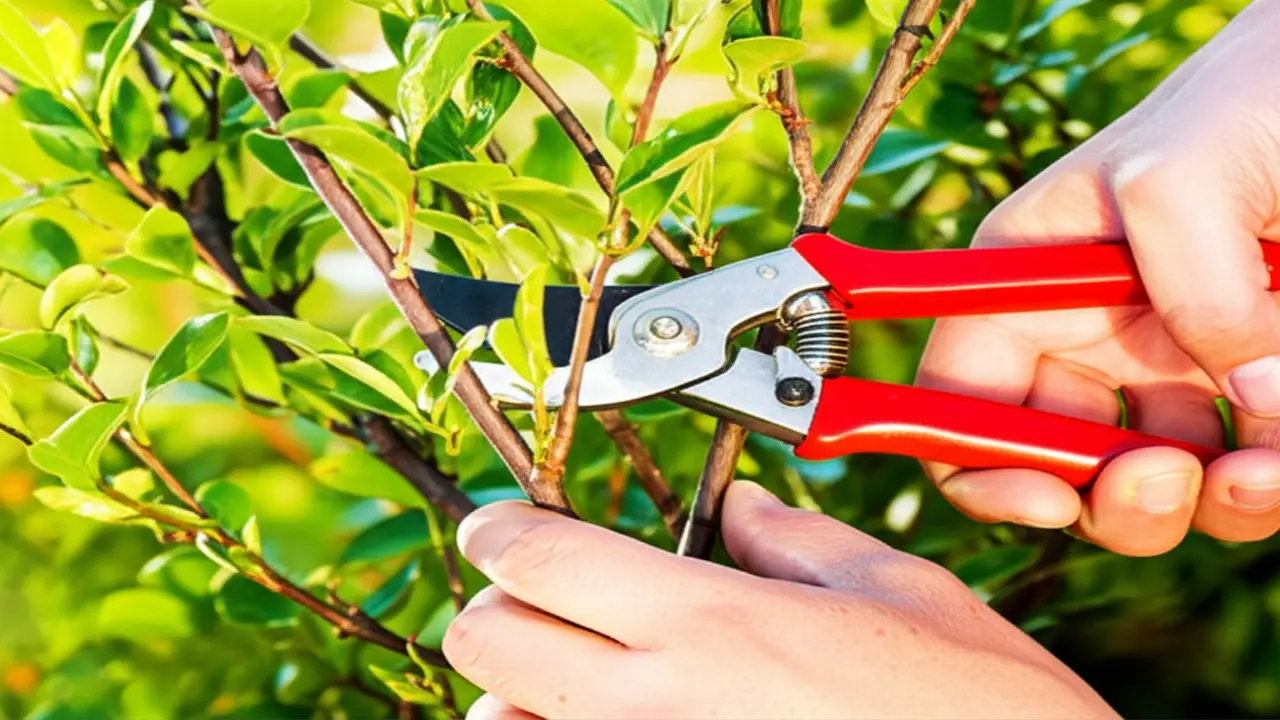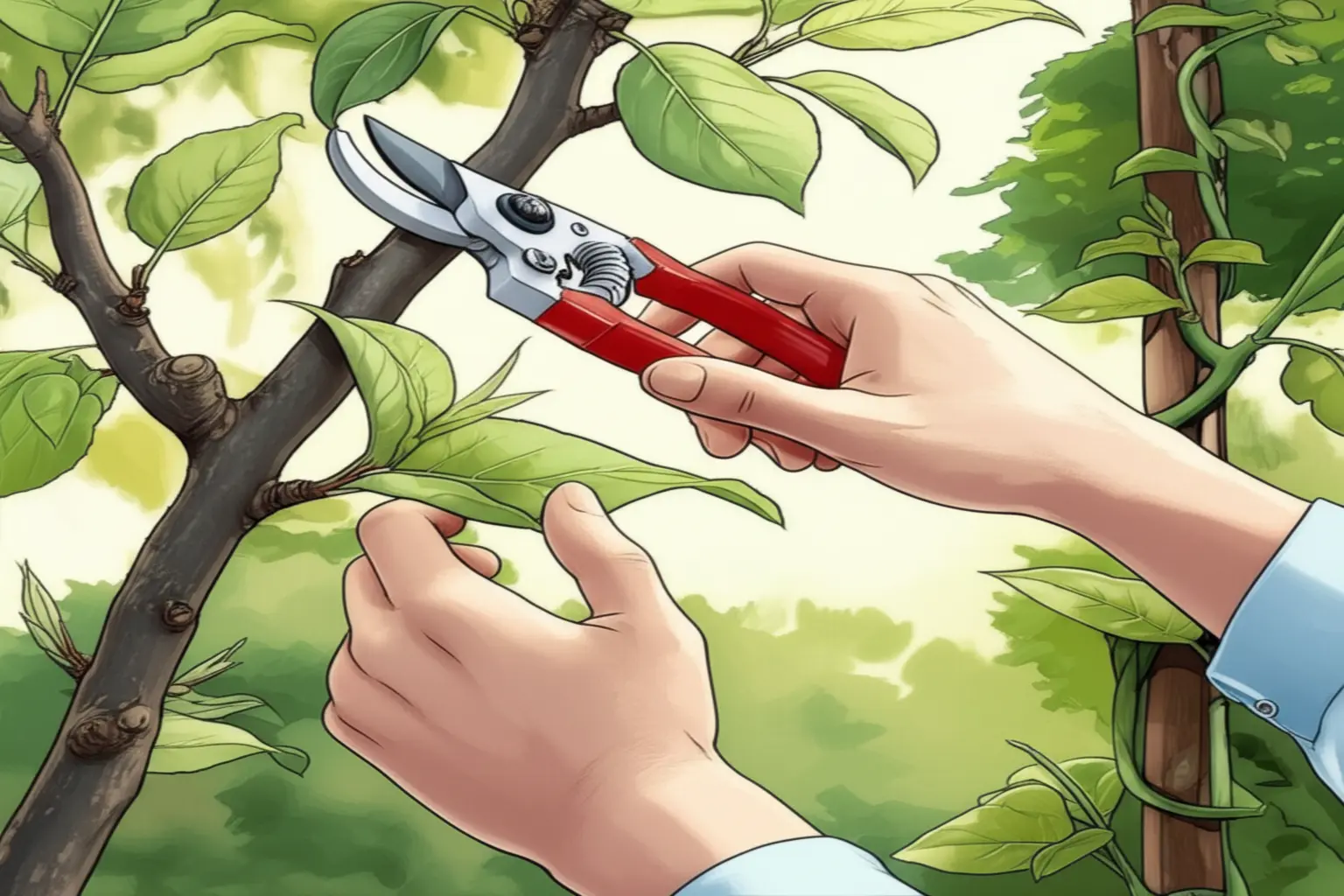
1. Understanding Organic Pruning Practices

2. The Principles Behind Organic Pruning
Organic pruning practices embody a holistic approach to maintaining plant health and vigor, integral to sustainable garden management in 2025. The foundation of organic pruning rests on stimulating natural growth responses while minimizing harm to the plant and surrounding ecosystem. By selectively removing dead, damaged, or overcrowded branches, gardeners enhance air circulation and light penetration, which reduces stress and supports healthy development. This strategic pruning also acts as a preventive measure against pests and diseases, disrupting habitats for harmful organisms and encouraging beneficial insects.
Key principles of organic pruning practices include:
– Prioritizing plant physiology and growth cycles to avoid stress and optimize healing
– Encouraging natural structural integrity to withstand environmental challenges
– Reinforcing biodiversity by fostering a balanced ecosystem that supports predators of pests
These methods underscore pruning not simply as a cosmetic task but as a critical intervention for ecological resilience and plant longevity. For gardeners seeking to fine-tune their pruning tools to these precise needs, understanding aspects like blade sharpness and ergonomics can further support organic objectives, as explored in guides on how to sharpen pruning shears. Embracing such practices aligns with emerging trends in organic cultivation and reflects a growing awareness of environmental stewardship in horticulture today.
3. Plant Anatomy and Growth Knowledge for Effective Pruning
Understanding fundamental plant anatomy and growth mechanisms is key to mastering organic pruning practices in 2025. Central concepts include nodes, which are crucial points where buds and leaves emerge, and buds themselves, categorized as terminal (apical) or lateral, directing plant development. Apical dominance, the phenomenon where the main shoot inhibits the growth of lateral buds, governs plant shape and must be considered to encourage desired branching or vertical growth.
Recognizing growth habits—whether a plant grows upright, sprawls, or has a bushy form—guides pruning techniques that stimulate healthy regeneration without stress. For example, selectively cutting just above a node containing a healthy lateral bud can redirect growth and improve air circulation. This precision ensures organic pruning not only shapes the plant but also maintains its vitality, prevents disease entry, and optimizes fruiting or flowering.
A practical illustration: in fruit trees, pruning above outward-facing buds fosters a wider canopy allowing better light penetration. Moreover, understanding seasonal growth cycles aids timing cuts to minimize sap loss and maximize healing. Such knowledge transforms pruning from a blunt tool into a strategic gardening practice.
Incorporating this botanical insight with the right tools—like well-maintained how to sharpen pruning shears—boosts efficiency and plant health, fully aligning with organic principles and sustainable gardening standards in 2025.
4. Timing: When to Prune Organically
5. Tools and Sanitation in Organic Pruning
In 2025, mastering organic pruning practices hinges on the proper use of tools and stringent sanitation methods to maintain plant health and prevent disease spread. Selecting sharp, clean pruning tools is essential; dull blades can cause ragged cuts that damage plants and invite infections. Tools like high-quality pruning shears, including small pruning shears for precision cuts or heavy duty pruning shears for tougher branches, enhance control and efficiency. Regular maintenance such as blade sharpening—learn more about how to sharpen pruning shears to extend their life—and timely blade replacement ensures tools remain effective.
Organic sanitation techniques play a vital role in disease prevention during pruning. After each use, thoroughly clean tools using natural sanitizers or alcohol solutions to eliminate pathogens. Avoid cross-contamination by sanitizing blades between plants, especially when pruning diseased specimens. Proper storage in dry conditions and using protective holsters can reduce rust and blade degradation. Adopting these sanitation habits sustains the longevity of your tools and safeguards your garden’s ecosystem.
For gardeners interested in deepening their tool knowledge, exploring the benefits of professional pruning shears or the convenience of cordless pruning shears can optimize pruning workflows. These practices are vital in supporting sustainable organic gardening that prioritizes plant vitality and environmental health. For detailed guidance on pruning tool care, visit our resource on pruning shears cleaning. This ensures your organic pruning efforts remain effective and eco-friendly.

6. Core Techniques of Organic Pruning
Organic pruning practices require precise cutting techniques that promote plant health and healing without synthetic aids. The key is to make clean cuts at the branch collar, the swollen area where the branch meets the trunk or parent limb, which contains specialized cells for natural wound closure. Cuts should be angled slightly to shed water and prevent rot, optimizing swift recovery.
There are three main types of cuts in organic pruning practices:
– Heading cuts: removing the tip of a branch to encourage denser growth and shape control.
– Thinning cuts: eliminating entire branches back to their origin to increase light and air penetration.
– Removal of dead or diseased limbs: essential for preventing spread of pathogens and maintaining overall plant vigor.
Avoiding synthetic wound dressings aligns with organic principles. Instead, allow the tree’s natural defense mechanisms to seal cuts. Using sealants may trap moisture and harmful organisms, delaying healing. Embrace the plant’s innate ability to compartmentalize wounds following proper pruning technique.
For detailed advice on tools to support these techniques, consider our guide on best hand cultivators which highlight essential implements that support precision and plant health during pruning. Adopting these organic pruning methods ensures healthier, resilient plants and a thriving garden ecosystem in 2025 and beyond.
7. Organic Pruning for Specific Plants
Organic pruning practices vary by plant type to optimize health, structure, and yield while adhering to environmentally friendly methods in 2025.
Fruit trees benefit from pruning focused on improving light penetration and airflow to enhance fruit development. Common systems like central leader and open vase help balance branch strength and fruit load. Removing water sprouts and suckers organically prevents resource competition without using chemicals.
Shrubs require different techniques depending on whether they are flowering or evergreen. Organic renewal pruning encourages new growth and flowering, while thinning maintains size and shape. These methods support the plant’s natural cycles and avoid aggressive cuts.
Ornamental trees, whether young or mature, need pruning to maintain structural integrity and provide clearance without altering their natural form. Organic techniques promote long-term tree health by preventing disease and encouraging balanced growth.
For vines and perennials, pruning is essential for maintaining vigor and stimulating blooms. Seasonal pruning prepares plants for dormancy or new growth phases. Organic approaches avoid synthetic treatments, focusing on timing and technique to naturally support plant cycles.
Utilizing organic pruning practices for these specific plants promotes sustainable gardening. For further tool advice related to pruning, explore recommendations on best hand cultivators. This supports gardeners in achieving optimal results through careful, eco-conscious maintenance.
8. Troubleshooting and Avoiding Common Pruning Mistakes Organically
Organic pruning practices demand attention to key details to prevent common mistakes that can harm plants. Frequent errors include improper cuts that damage stems or buds, and overpruning which stresses plants and reduces their vigor. Managing these issues organically involves precise cutting techniques: always prune at a 45-degree angle just above a bud facing outward to encourage healthy growth.
When large pruning wounds occur, applying natural wound sealants like neem oil or diluted cinnamon powder can protect from infection and pests without chemicals. Minimizing plant stress also means pruning during appropriate seasons and avoiding removal of more than 25% of the foliage at once. This conservative approach supports steady recovery and robust development.
Dealing with pests or diseases encountered after pruning organically involves introducing beneficial insects like ladybugs and using homemade sprays made from garlic or chili. These methods maintain plant health without harmful residues. For tool maintenance, regularly sharpening your pruning shears ensures clean cuts, which are less prone to disease. For detailed guidance on maintaining tools, see tips on how to sharpen pruning shears.
By following organic pruning practices carefully, gardeners can promote healthy growth, reduce risk of infections, and sustain their plants’ natural resilience effectively.
9. Best Practices and Tips for Sustainable Organic Pruning
10. Connecting Organic Pruning with Overall Garden Ecology
Organic pruning practices are essential not only for individual plant health but also for fostering a balanced garden ecology. These practices support soil vitality by minimizing disturbance and encouraging natural nutrient cycles, which in turn enhances microbial activity crucial for healthy soil structure. By selectively pruning to remove diseased or overcrowded branches, gardeners help maintain plant diversity, promoting biodiversity that benefits pollinators, beneficial insects, and wildlife habitats.
Implementing organic pruning as part of an overall ecological approach means considering the garden as an interconnected system. For example, pruning debris can be composted or left to decompose naturally, adding organic matter back into the soil. This aligns with sustainable gardening principles by reducing waste and enhancing the soil’s capacity to retain moisture and nutrients.
Gardeners practicing organic pruning contribute to pest management without chemical interventions by improving air circulation and light penetration, reducing the risk of fungal infections and pest populations. Integration with other ecological garden strategies, such as selecting native plants and practicing organic soil amendments, further strengthens garden resilience.
Understanding how organic pruning practices fit into larger ecological cycles encourages environmentally conscious gardeners to nurture gardens that are healthy, sustainable, and vibrant. This holistic perspective ensures that pruning is not an isolated task but a vital element in promoting long-term garden vitality.
For practical advice on selecting precise tools for pruning tasks, including options that support organic methods, explore our guide on small pruning shears. This tool selection enhances the effectiveness of organic pruning while preserving plant health and ecology.

